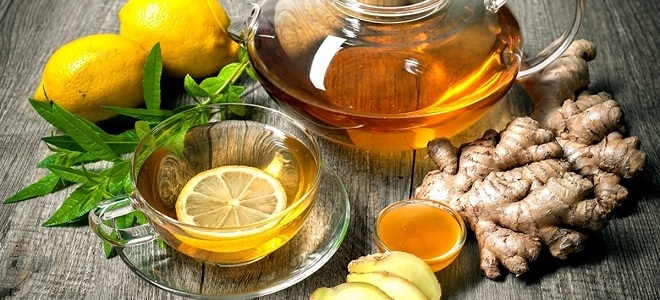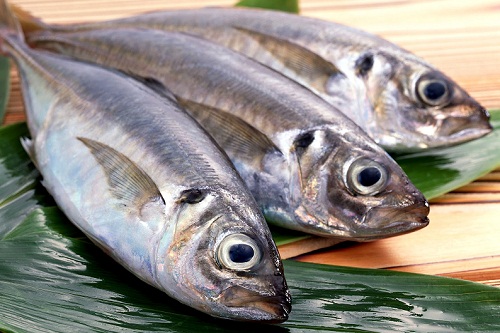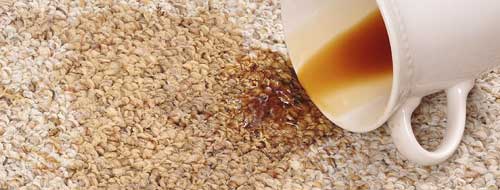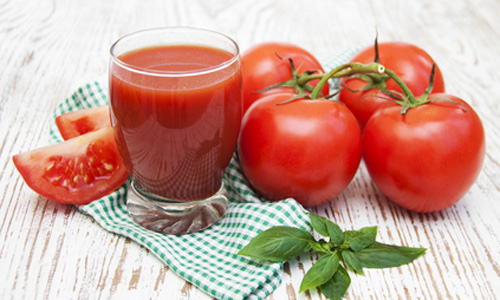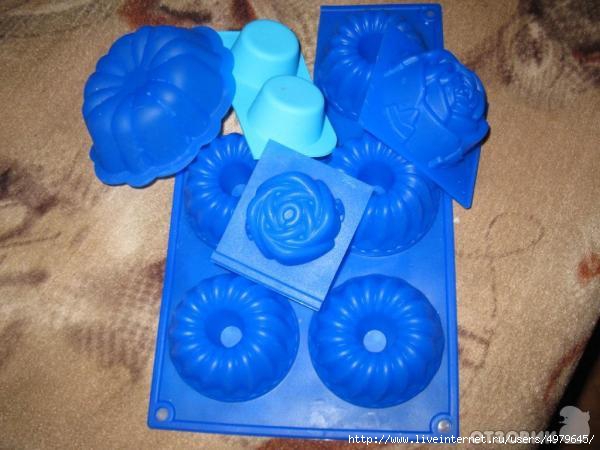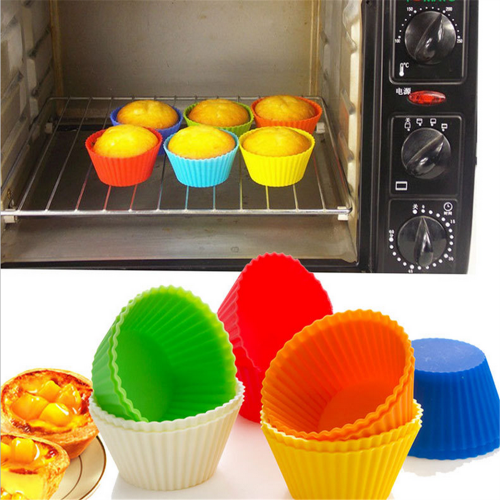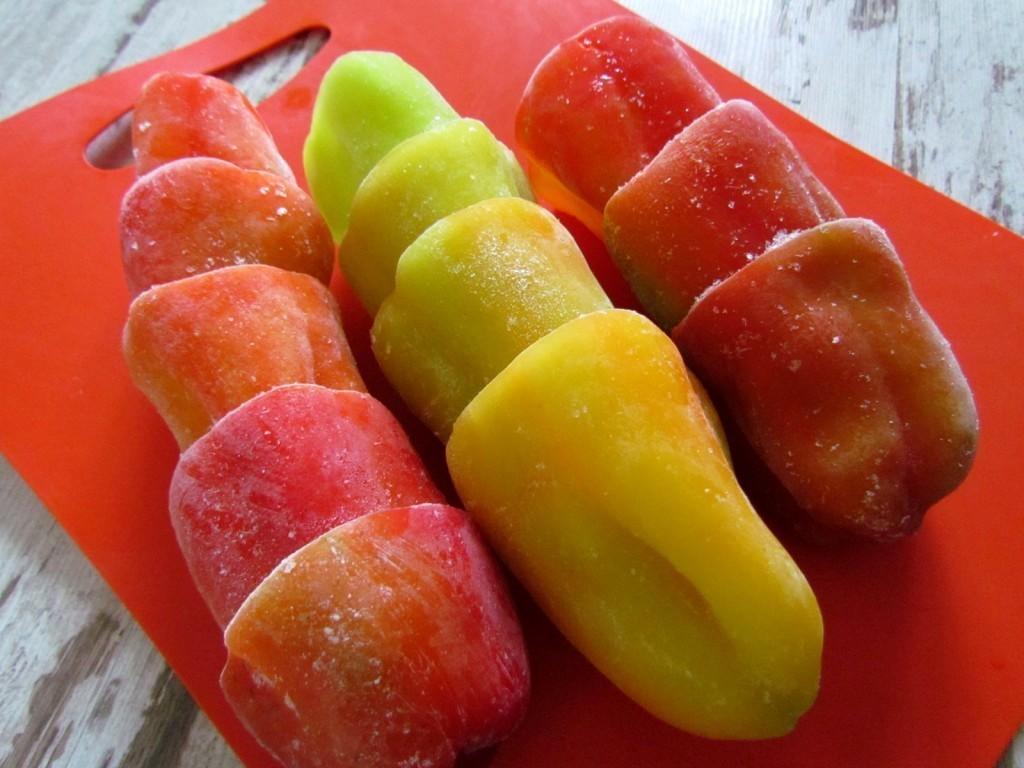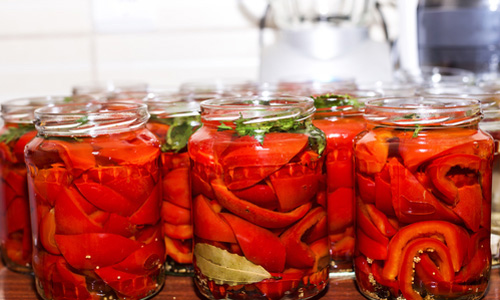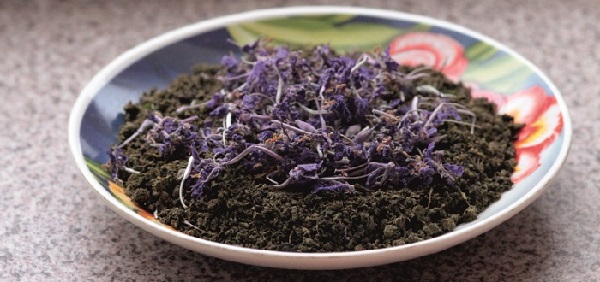Life hacks how to remove stains from tea from clothes and other surfaces. How to remove stains from tea in a washing machine
3 minutes to read
Coffee or tea stains are very difficult to remove. After all, tea contains tannin - a tannin, because of which the stain quickly eats up into the tissue, if you do not immediately begin to remove it. From coffee and tea, stains appear with clear contours on clothes of light yellow, brown or brown colors. These spots plunge the hostesses into complete despair, as they require special efforts to remove them. You can save things with the help of cleaning products that are specially created to remove stains, or use improvised means that are very effective in the fight against tea and coffee stains.

Removing stains from clothes
There are several ways to deal with stain problems:
- a fresh stain will help to remove the slurry made from salt and glycerin, which is applied to the stain and left for a while. Stains from tea and coffee gradually dissolve and discolor. After this, the clothes should be washed at the temperature indicated on the label;
- coffee or tea stains can be removed with a mixture of glycerol and 10% ammonia in a 2: 1 ratio. In the resulting mixture, moisten the swab and wipe the dirt, then wash the clothes;
- if the stained thing is made of white cloth, then a solution of citric and oxalic acid is used. Take a teaspoon of lemon and two teaspoons of oxalic acid and dissolve in a glass of water. Wet the fabric and leave for a quarter of an hour. After the stain disappears, it is necessary to wash the clothes. To the effect was large, add a small amount of ammonia to the water (1 teaspoon);
- from light things that need delicate care, an obsolete tea stain is removed using hydrogen peroxide. Peroxide is applied to the contaminated tissue with a swab and washed after 10 minutes in cold water;
- to remove contamination from colored clothing you need to use a solution of borax. Wipe the dirty area of \u200b\u200bclothing with a 10% solution. If it is not completely cleaned, you need to moisten it with a solution of citric acid. At the end of the procedure, the product must be rinsed first in cold water, and then in warm;
- to remove stains from products made of wool and silk, it is enough to wipe the place of contamination with warm glycerin. The fabric, soaked in heated glycerin, is left to lie down for 10-15 minutes. In order for the oily stains from glycerin to disappear, the fabric is blotted with a napkin and washed in warm water, adding washing powder;
- a mixture of distilled water and lactic acid will clean silk products well. Acid and water are mixed in a 1: 1 ratio, moisten a dirty place, then rinse the thing in cold water.

Removing stains from the tablecloth
From a linen (cotton) white tablecloth, tea stains can be removed by wiping them with a solution of ammonia. To do this, dissolve a teaspoon of alcohol in a liter of water and moisten a dirty place with a sponge. It is advisable to put a napkin under the contaminated material so that the stain “passes” onto it. If it is not completely removed, then it is necessary to moisten the fabric with a solution of citric acid. A tablecloth treated with acid should be rinsed well and washed in warm water.
If old tea or coffee stains “show off” on a snow-white tablecloth, then they can be removed using a solution of bleach. Using this aggressive cleanser, you must thoroughly rinse the item to remove all traces of chlorine. If this is not done, then bleach will corrode the tissue fibers.
Removing stains on the carpet

To remove coffee or tea stains from the carpet, wipe the stained area with a sponge soaked in glycerol solution. A stain-removing solution is prepared from one tablespoon of glycerin and a liter of cold water. When the stain comes off, this place must be wiped with a soap solution.
If at home stains from these drinks cannot be removed in any way, then you can use dry cleaning services.
Similar articles


So that tea spilled on clothes does not become an excuse to abandon my favorite thing, I decided to find ways to get rid of such pollution. Through trial and error, I found out how to remove the stain from tea with my own hands. I will share the most effective methods with you.
Rules for successful stain removal
To remove stains from tea is quite problematic. No wonder they are classified as difficult to remove pollution. Before you start cleaning, you need to remember a few simple, but very important rules:
| Picture | rules |
 |
Rule 1. Stock up on the backing
Always apply several layers of white clean cloth to the dirt before cleaning, so that they absorb the stain and prevent it from spreading. You can use blotting paper - perfectly absorbs any liquid. |
 |
Rule 2 Take a test
Apply a little selected stain remover to an inconspicuous area and look at the tissue reaction. This is especially true of colored fabric with a pattern that can change the shade. |
 |
Rule 3 Correct application
In order to remove the stain qualitatively and not leave stains, always apply the product first around, and only then directly on the pollution itself. That is - move from the edge of pollution to the center. |
 |
Rule 4. Little concentration
To successfully remove the tea stain, first prepare a weak solution and, if it did not work, make a concentrate. This will protect the affected item from stains left by the product. |
Print tea stains
Method 1. Manual Cleaning
How to wash tea from clothes? I tried many options and tools. Only those that gave the best result were placed in the table:
| Picture | Instruction manual |
 |
Method 1. Glycerin and salt
|
 |
Method 2. Glycerin and ammonia
|
 |
Method 3. Citric and oxalic acid
|
 |
Method 4. Ammonium
|
 |
Method 5. Hydrogen Peroxide
|
 |
Method 6. Chlorine
|
 |
Method 7. Lemon juice
|
 |
Method 8. The solution of borax in glycerin
|
 |
Method 9. Lactic Acid
|
Method 2. Machine Wash
I told how to remove traces of tea using improvised means. But there is also an emergency solution to the issue - washing in a typewriter machine.
Things to consider:
- Choose the temperature and washing mode appropriate to the type of fabric.

- Liquid detergents are preferred. - they act more delicately on tissues and are better rinsed out.
- If the pollution is oldand managed to firmly eat into the fibers, pre-wash it with soap (cosmetic or household).

Method 3. Dry Cleaning
It would not be fair not to mention the guaranteed method, how to remove tea from white things or delicate fabrics? If you don’t want to risk any of the suggested recipes or if you don’t have time to deal with stains yourself, you can always turn to specialists.

Summarize
I tested all the described methods on my own experience, I was satisfied with the result. If you have questions or you know other solutions to the problem, I will be glad to read them in the comments. The video in this article will demonstrate how to remove tea stains - look!
Do not despair if you spilled tea on clothes.
Pleasant get-togethers with a girlfriend on a winter evening over a cup of fragrant hot tea can be spoiled by banal nuisance - a brown stain on your favorite clothes. Let this “tragedy” not overshadow your mood. There are many ways to remove a tea stain.
Subtleties of washing colored fabric
Clothing of bright colors is popular among girls, but personal care requires delicate, as it is able to molt. Therefore, you can immediately forget about deep cleaning products. But do not panic, there are folk recipes. So, for example, to remove persistent contamination from black tea:
- lemon acid;
- glycerol;
- lemon juice.
They are 100% cope with tea stains, and plus everything else, they are also safe for color.
Glycerin is used both independently and as part of solutions. You can buy at any pharmacy and without a prescription. In general, it is better to keep this drug on hand, because its help to the housewife in household chores is priceless.
Methods for cleaning tea stains with glycerin:
Heat the liquid to room temperature. Apply to contaminated area with a sponge. Wash off after 15 minutes. Wash the product.
Prepare a mixture of glycerin and table salt. The resulting slurry is applied to tea divorce. After 25 minutes, remove residues from clothing and wash.
Mix glycerin with ammonia (2 tablespoons + 1 drop). Apply cleaner to contamination. The stain under its influence will completely dissolve. It remains only to rinse the fabric.
Do not forget about the proportions, measure them accurately and accurately. A large amount of ammonia will spoil colored clothing.
 Make a solution of citric acid and apply it on the spots.
Make a solution of citric acid and apply it on the spots. Citric acid is also suitable for removing brown tea stains. True, the effect is not so fast, but be patient. Pour a tablespoon of citric acid into a liter of water and soak the stained product in the resulting solution. Keep this thing at least 12 hours. And then wash in the machine as usual with the addition of powder.
Acid can be replaced with lemon juice, its cleaning properties are no worse.
When stains are removed from colored products, a solution of borax will come to the rescue. It is applicable to various types of fabric:
- jeans;
- cotton;
- silk;
- wool
- flax.
Even if the sweater is dirty, the borax will cope with a stain on knitwear.
For the cleaning procedure you will need a cotton pad. Soak it in a 100% borax solution and rub the stain until it dissolves. After that, treat the place of contamination with a soft cloth dipped in soapy water. And finally rinse the thing.
Save White From Tea Stains
 Try to wash the stain with a sponge dampened in ammonia.
Try to wash the stain with a sponge dampened in ammonia. On light fabrics, the tea stain is especially noticeable. But potent drugs are used to clean these materials:
- Chlorox
- Domestos,
- Clarifiers.
The name “Chlorox” speaks for itself: it contains bleach, which will easily remove even an old tea stain. Soaking the product is not required, the substance is added to the powder when washing the product in the machine.
But the next tool is Domestos liquid consistency, it is applied directly to the place of contamination. The stain will disappear without a trace. All that remains is the smell of bleach, which leaves after washing.
With white material, tea stains are removed with clarifiers for hair.
Do not forget about folk remedies that will return dazzling white to the fabrics:
- Oxalic and citric acid;
- Ammonia;
- Peroxide.
Acids only act when they are together.
Connect them correctly: 2: 1, where the first indicator for oxalic acid.
Treat the stain with a mixture, the pollution will easily go away.
Liquid ammonia will help cope with tea stains. Pour a teaspoon into a liter of water and leave the laundry in this solution for 4 hours. You can not soak the thing completely, and apply ammonia only to the stain.
The principle of using hydrogen peroxide is similar to that described above.
We remove stains from clothes:
 Do not rub the stain, otherwise it will penetrate the fibers even deeper.
Do not rub the stain, otherwise it will penetrate the fibers even deeper. Apply stain remover to the middle. This will protect against unnecessary spreading and spreading.
After removing the stain on the product, stains may remain, a lemon slice will help to cope with them.
Before proceeding with the tea stain removal procedure, make sure that the cleaning agent does not harm the tissue. It is simple to do: apply a little preparation to the product from the wrong side.
Observe proportions. It is better to start getting rid of pollution with a mixture of a weak concentration. And if you need a second procedure, make it stronger.
Feel free to remove stains at home, use special cleaners or folk remedies, and let annoying misunderstandings not cool your love for a noble and tart drink.
How to remove tea stains with Vanish? Video Tips:
Almost a day goes by without a cup of tea. For all its merits, this invigorating drink has one significant minus - it is not easy to remove tea stains, especially from white clothes.
Despite these difficulties, there are many means, both domestic and folk, that can cope with these dark traces at home. Some of these cleaning methods can even cope with old stains.
The coloring properties of tea are determined by the content of tannin in this drink. Moreover, in green tea this substance contains much more than in black. Therefore, ugly spots remain from any of these drinks. The peculiarity of tannin is that these properties do not appear immediately, it is much more difficult to remove old spots than fresh ones.
If there is a trace of tea leaves on the clothes, you need to immediately wash the thing in the washing machine. The temperature regime is selected depending on the type of material, it is desirable to add a gentle bleach, for example, Vanish. For white cotton fabrics, use chlorine bleach.

If there is no way to wash your favorite clothes in the machine, you can do it manually, but you should adhere to certain principles:
- So that there are no stains, the stain should be treated from the edge to the middle.
- Before using a cleanser, you must first try its effect on an inconspicuous area of \u200b\u200bthe fabric.
- For things made of thin fabrics, bleach should be diluted slightly with water.
- The tea stain cannot be rubbed hard so as not to damage the fabric.
Important! For children's clothing, only mild bleaches and other household products should be used.
To clear a trace of tea from clothes, try one of the popular remedies:
| Means | Mode of application |
| Acid (citric or oxalic) | Acid can erase tea traces from white items, towels, bedding, or tablecloths. For things made of cotton or linen, both citric and oxalic acid are suitable. Lemon is good for new spots. In a solution of citric acid, moisten a cloth and blot the problem area, after 15 minutes you can wash it with water. If the first time it was not possible to get rid of the dark trace, you need to moisten it with ammonia, then again with acid. Oxalic acid is better for dealing with old spots (dilute a teaspoon in 200 grams of water). She can quickly remove the tea stain on white, for colored things this solution is disastrous. |
| Glycerol | Stains from tannin will help clean alcohol glycerin, heated to 60 degrees. They need to treat the contaminated area, wash after 20 minutes. For fabric with a pile or carpet, glycerin paste is suitable. It is prepared as follows: mix four tablespoons of glycerin with two teaspoons of salt. With this composition, we process the problem area and wash off after 20 minutes. |
| Bleach solution | The product is contraindicated for things made of silk, wool and synthetics. But with cotton fabrics tea is perfectly washed. In a solution of bleach, soak the thing for five minutes, then wash. |
| Vinegar | Vinegar must be mixed in water to obtain a weakly concentrated solution. They need to fill in the dark spot, then rinse. |
| Borax | This substance will remove tea stains from your favorite sweater, jacket, coat or jeans. You will need a 10 percent solution of tetraborate and a cotton pad. With a solution, we process a dirty stain with a disc, then we erase it in the usual way. |
| Chlorine bleach | To remove the trace of tannin from natural fabrics, a bleach with a chlorine content, such as the already familiar White, will help. For thin tissues, this tool is not applicable. |
| Hyposulphate | This substance is sold at any pharmacy. We raise a teaspoon of hyposulfate in a glass of water, treat the contaminated area, then rinse with a solution of two spoons of ammonia and a liter of water. |
| Ammonia | Dissolve a teaspoon of ammonia in a liter of water, use a cotton pad to treat the stain with a solution until it is perfectly clean. |
| Chlorox | Chlorox - a modern tool for cleaning white things. It must be added together with washing powder to the compartment of the machine and washed. |
| Domestos | On the fabric you need to apply a couple of drops of liquid Domestos and wash, the trace will disappear right before your eyes. |
| Soda ash | The problem area should be moistened with water, then covered with a layer of soda ash. |
How to remove tea stains from other surfaces?

Often, drinking tea can stain the sofa or carpet. A fresh stain needs to be instantly blotted with a small napkin or towel.
Important! Do not rub the stain, otherwise it will spread along the surface of the carpet or furniture.
Now we are preparing a simple solution: we dilute a tablespoon of dishwashing liquid in half a liter of cold water. We process the tea trail with this solution, then blot it with table vinegar and leave it for a short period.
Another effective method is to treat the stain with a mixture of ammonia and glycerin. After processing, it is necessary to withstand this mixture on the surface for 15 minutes, then wipe it with a damp cloth.

Soap solution will help to clean the leather sofa from the remnants of tea. Grate laundry soap and stir in hot water and gently process the tea mark.
No less frustration causes a tea trail on important papers or an expensive book. To remove the rest of the tea from the paper is also quite realistic. To do this, you need 3 percent hydrogen peroxide and slaked lime (200 teaspoon of water, one teaspoon). Wet a cotton swab in peroxide and process the tea trail. If a dark trace remains, moisten it with a sponge with lime. Then you need to dry a sheet of paper well.
The second method of processing a paper surface is based on the use of chlorine bleach mixed with water. We treat the stain with a solution and iron the sheet with an iron.
Useful video
- Related posts
If you inadvertently spilled tea on your favorite blouse, do not despair. You can remove fresh spots by washing the product with laundry soap in hot water. It is much more difficult to cope with brown marks when they are dry, and the dye is firmly absorbed into the fabric. Such a nuisance, unfortunately, is not uncommon. Let's figure out how to remove old stains from tea, and return the clothes to a perfect look.
Methods of struggle
Tea is quite difficult to wash off because it is a powerful natural colorant. It contains the substance tannin, which tightly eats into the fibers of the fabric and gives them a bright brown color.
The easiest way to deal with the problem is to purchase a high-quality stain remover in the household chemicals department and process the pollution, strictly following the instructions. How to remove old stains from tea? You can use:
- faberlic stain remover universal EXTRA OXY;
- amwey SA8 ™ bleach;
- vanish liquid for colored or white fabrics.
Modern household chemicals can clean the most persistent stains, but it has a high cost. You can return the perfect look to clothes with improvised means that can be found in the arsenal of every housewife. Before removing the old tea stain, prepare:
- ammonia;
- citric and oxalic acid;
- glycerin and borax;
- table salt and peroxide.
If you cannot wash the item immediately, wipe the brown markings with alcohol diluted with water 1: 3. This will simplify the task of removing stains when they dry.

How to wash white fabric
A simple remedy by which you can remove the old stain from tea on a white material is "White." It is only suitable for dense, natural fabrics such as linen or cotton.
- Dilute a couple of caps of the product in a liter of heated water and soak the stained thing for several hours.
- After you have to rinse it well, adding air conditioning to the water. It will relieve a specific smell.
- When working with bleach, do not forget to wear rubber gloves to protect the delicate skin of your hands.
If the house does not have "White", do not worry, you can remove the old stain from tea and improvised means. Use a mixture of glycerol and ammonia in a ratio of 4: 1. This solution is a powerful cleaning agent and can easily cope with traces of tea brewing.
- Moisten the contaminated area, apply the prepared solution to it and leave for half an hour.
- Then wash the item with ordinary powder, rinse and dry.
It is easy to remove hydrogen spots from the white blouse. Thoroughly dampen the dirty surface of clothing with a detergent, wait a quarter of an hour and wash in the usual way.

Use acid
Old tea stains are effectively destroyed by oxalic acid. It can be used for white natural material. Colored and synthetic fabrics under the influence of acid easily deteriorate.
- In a glass of water, dilute 1 tsp. oxalic acid, soak in stain fluid and wait half an hour.
- Then rinse the product with water, in which dissolve 1 tsp. ammonia.
- Having tried this method, you will stop thinking about how to remove the old stain from tea.
To enhance the whitening effect, it is recommended to mix oxalic and citric acids in a ratio of 1: 2. Measure one and a half teaspoons of the mixture and dissolve it in 250 ml. water. Before use, it is advisable to add 3 drops of ammonia to the liquid and treat it with the contaminated area on the fabric. The spots quickly brighten and disappear.
For natural silk, salvation from stubborn stains is lactic acid. It must be mixed in equal amounts with purified water and soaked in blots. After 20 minutes, the product must be thoroughly rinsed with water and washed with powder.
We wash colored linen
An effective tool to remove the old tea stain on a bright fabric is a 10% borax solution. It will not negatively affect the coloring of the product, but only relieve stains of high quality.
- Get a borax vial from a pharmacy, soak a piece of cotton wool with it and wipe it with dirt.
- Remove any stains remaining after cleaning, sprinkling a damp cloth with mixed in equal amounts of citric acid and coarse salt.
- After 15 minutes, rinse the item first in cold and then in hot water and hang to dry.
Marks of tea on wool or silk are simply removed with glycerin. Heat it lightly in a water bath and moisten the stains. After a quarter of an hour, pat the fabric with a dry cloth and start washing with powder.
- You can restore the purity of colored fabrics by mixing salt and glycerin in a homogeneous slurry.
- Apply the mixture to dirty material and wait for the stain to dissolve.
- When it discolors, you will have to do the usual wash.
On well-colored material, the faint traces of green tea are easy to wipe with vinegar. Pour in a glass of water 1 tbsp. l funds and soak in the liquid the stained area of \u200b\u200bthe fabric. After an hour, remove the item, unscrew and wash with high-quality powder.
Mistress note
- Tea stains often appear not only on clothes, but also on upholstered furniture, carpet and other household items. Glycerin will help to cope with them. You need to breed 1 tbsp. l glycerin in a liter of cool water and rinse thoroughly with dirt on a sofa or carpet.
- A fresh tea stain from the upholstery of upholstered furniture can simply be removed with a dishwashing detergent or household shavings dissolved in hot water. soap. Wipe the stains with a moistened soft sponge, and then remove the foam with a clean cloth.
- Before forgetting to remove old stains from tea, do not forget to test the product on an inconspicuous part of the thing. This will help avoid possible discoloration of the fabric.
- When preparing cleaning solutions, strictly adhere to the recommended dose, as improper proportions can lead to a decrease in the effectiveness of the mixture or to damage the material.
If it was not possible to get rid of the welding spots the first time, act on the pollution again and it will disappear completely.

